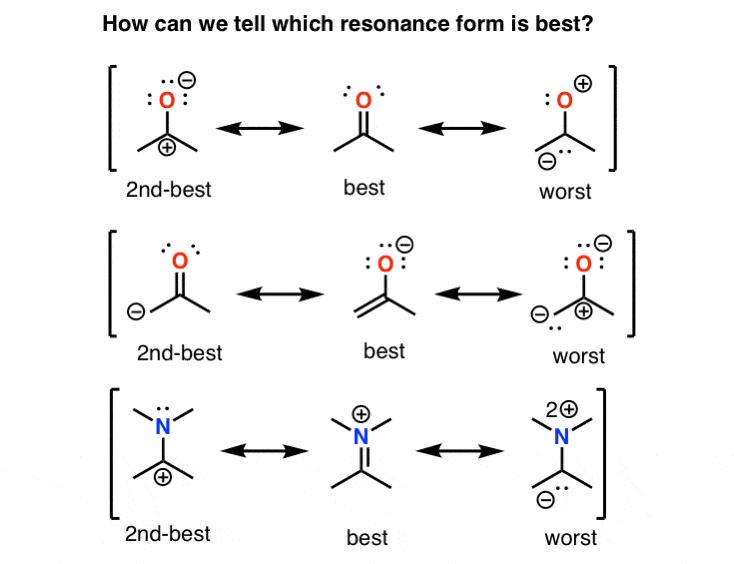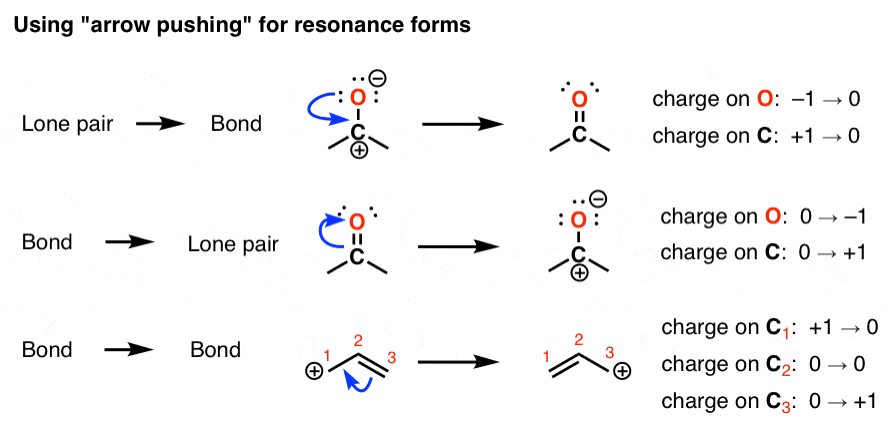The most important question when learning a new reaction is recognizing “What Bonds Form, What Bonds Break?”
If that’s #1, then what’s the second most important question to ask yourself?
I think it is: “how do the electrons move?”
[I have a friendly disagreement with a lot of instructors on this point, since it’s common to claim that this is the actually the most important question. I stress bond forming and breaking first because I’ve seen so many students first-hand fail to recognize changes in bonding, and I found that if I tried to talk about electrons to them without establishing the changes in bonding that were occurring, I never got very far.]
“How Do The Electrons Move?”
Once you understand which bonds and break, understanding electron flow is really where the rubber meets the road in organic chemistry. In a chemical reaction, we’re forming and breaking chemical bonds, which are pairs of electrons shared between two atoms. The process of breaking and forming bonds is going to change the charges around each atom, at least momentarily. So if we want to have a deeper understanding of chemical reactions, we need to understand how this happens.
Remember: chemistry is all about “opposite charges attract, like charges repel”. The nucleus, which is positively charged, is composed of protons. Surrounding the nucleus are negatively charged electrons. It’s important to note that chemical reactions don’t affect the number of protons (i.e. the nucleus). This ain’t nuclear physics! Instead, chemical reactions affect the number of electrons around an atom. Just like economic transactions are a transfer of currency between two entities, you can kind of think of electrons as the “currency” of chemistry. Think of it like this:
Every Chemical Reaction Is A Transaction Of Electrons Between Atoms
If you understand how to recognize where the electrons are (and aren’t), and can draw a series of diagrams that show how the electrons flow from atom to atom, depicting bond-forming and bond-breaking events in detail, then you’ll have a much better understanding of What Is Going On.
It’s the difference between this:

and this – the same reaction, but in more detail:

So what I’m going to talk about in the next series of posts is understanding electron flow. Using the analogy of “electrons” to currency, hopefully it will be made clear how using these principles:
- opposite charges attract, like charges repel
- negative charge (high electron density) flows to positive charge (low electron density)
- electronegativity is an atom’s ability to stabilize negative charge. In other words, it’s an atom’s “greediness” for electrons.
We can start to figure out answers to the following questions:
- How can we look at a molecule and tell where the electrons are (or aren’t)? Also, why is “formal charge” not the same as “electron density”?

- How can we use electron densities to tell plausible (or implausible) reactions?
- Resonance. What the heck is it?

- How do we tell which resonance forms are significant and which are not?

- Since electrons are the “currency” of chemistry, it makes sense to have an accounting system, right? So we’ll see how to apply the accounting system of organic chemistry (the curved arrow formalism) to show electron flow in detail. EDIT: Jess rightly points out that “formal charge” is also a form of accounting. That’s absolutely true – and very important!

Finally we can then apply all of these tools toward understanding simple reactions, especially acid-base, substitution, addition and elimination reactions.
This is going to open up a whole new set of questions! But it will at least lay the foundations for a deeper understanding of organic chemistry.
Next Post: How to use electronegativity to figure out electron density (and why NOT to trust formal charge)
